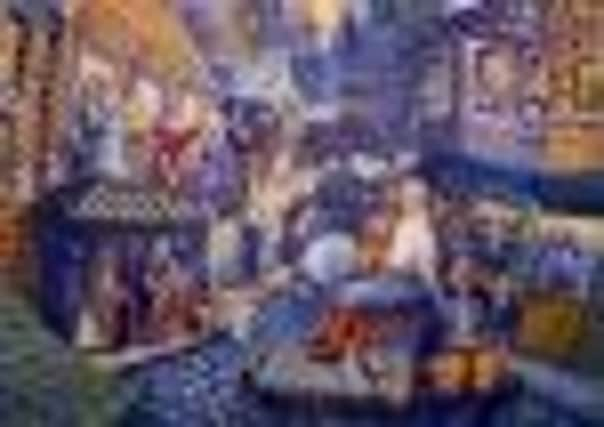Former Capital artist’s labours of love brought together for first time


The result is the first complete exhibition of artist John Gray’s dark imagination with a series of striking large-scale oil paintings set to go on show together for the first time.
The former Capital resident left to attend art school in London at the age of 20 but the city in which he was reared has never left the now 70-year-old artist.
Advertisement
Hide AdAdvertisement
Hide AdHis work depicts the likes of notorious city crook Deacon Brodie, deformed Cowgate cobbler Bowed Joseph, who was said to have led 10,000 residents to the town council offices to demand better conditions for the city’s poor, and Major Thomas Weir, The Wizard of the West Bow, who publicly confessed to witchcraft and satanism.
The former Boroughmuir High School pupil said: “This exhibition is my way of paying homage to the city which gave me the education and provided the environment that inspired me to spend the rest of my life as a professional artist. It’s an artistic labour of love.
“How can you not be inspired by Edinburgh’s stonework and cobbles and fascinating cast of characters? You can’t help but be inspired by its streetscape and dark past.”
Explaining what draws him towards the darker elements of his work, he said: “I’ve been reading a lot of Ian Rankin.
Advertisement
Hide AdAdvertisement
Hide Ad“My mother, Flora, always blamed my more sinister nature on having acccompanied her as a toddler to her work at Queensberry House which was then a home for the terminally ill.”
Gray’s paintings aren’t solely concerned with Edinburgh’s past either.At a time when Scotland’s independence is a political issue, two of the works feature incidents brought on by the historic acts of union with England – both The Porteous Riots and Queensberry House bring witness to the disturbance caused by acts of union.
The Porteous Riots relates to smuggler Andrew Wilson, who began his nefarious exploits as a result of tax being placed upon port and brandy by the Westminster government in 1736.
Wilson helped a friend escape from Tolbooth Prison and his efforts made him greatly popular among the city’s citizens, so much so that when he was sentenced to hang a riot broke out at the gallows.
Advertisement
Hide AdAdvertisement
Hide AdNine died when they were fired on by the City Guard, and the deaths were blamed on the captain, John Porteous. Found guilty of murder, he was sentenced to death but was reprieved. Learning of this, an armed mob broke into Tolbooth Prison, took Porteous and hanged him in the street.
The Queensberry House episode, meanwhile, is an even more grisly tale which concerns James Douglas, the mad Earl of Drumlanrig.
Described as an imbecile and violently insane, he was kept under lock and key from childhood at Queensberry House, which is now part of the Scottish Parliament complex.
It is reported that when the Act of Union was signed in 1707, the disruption from the riots resulted in his escape.
Advertisement
Hide AdAdvertisement
Hide AdThe ten-year-old Drumlanrig is said to have slaughtered a young kitchen boy, roasted him alive on a spit, and begun to eat him before he was discovered and caged.
Gray said: “I always try to include humour in my works, the references to the Porteous Riots and the episode relating to the Mad Earl at Queensberry House are me being a wee bit mischievous really. I’d be quite pleased if they ever found their way to being exhibited in the Scottish Parliament.
“Both incidents highlight that Edinburgh and Scottish character trait of being willing to be pushed only so far.”
Gray’s work also includes autobiographical incidents, evoking vivid memories of school such as a day spent swimming at Drumsheugh Baths.
Advertisement
Hide AdAdvertisement
Hide AdHe said: “We used to attend each week and they had these big rings suspended on ropes over the water. The bigger boys used to test you to see if you could make it. It was terrifying in truth. This is something I feel I have captured in the painting.”
This will be the first time that all of John’s Edinburgh paintings have been shown together, with many of the pieces being recalled from private collections and collectors to make up the full series.
He added: “I’ve worked on this collection for the past 20 years and it’s become a lifetime’s ambition to show them all in the city that inspired them.”
Gray exhibits his works at Whitespace from Friday until April 26. For further information on John Gray’s Edinburgh, visit www.riverbank-studios.co.uk